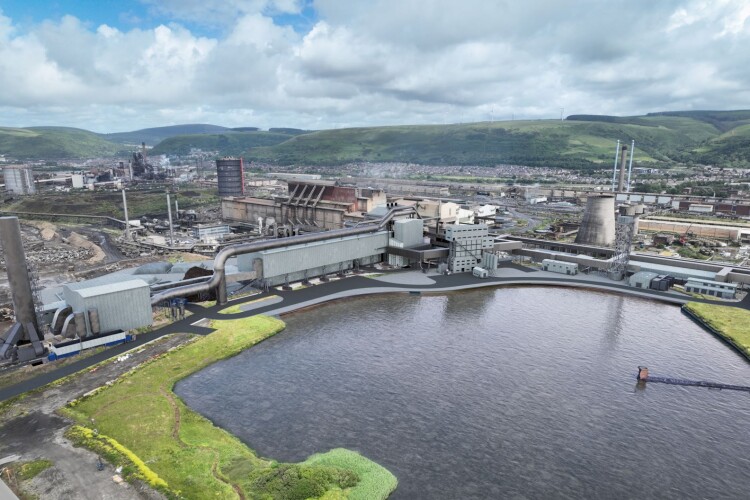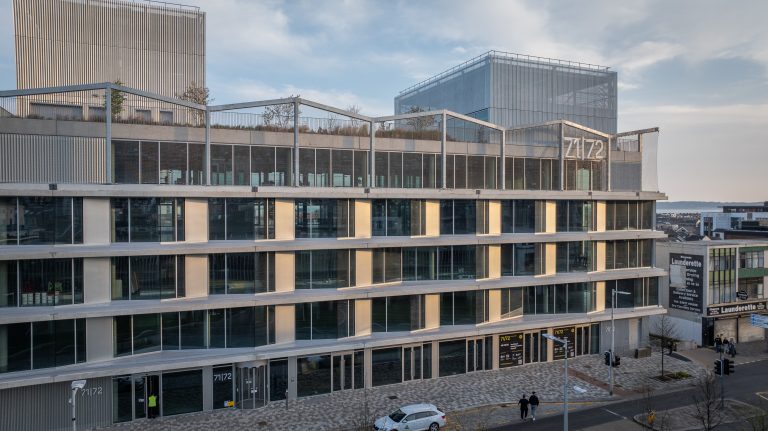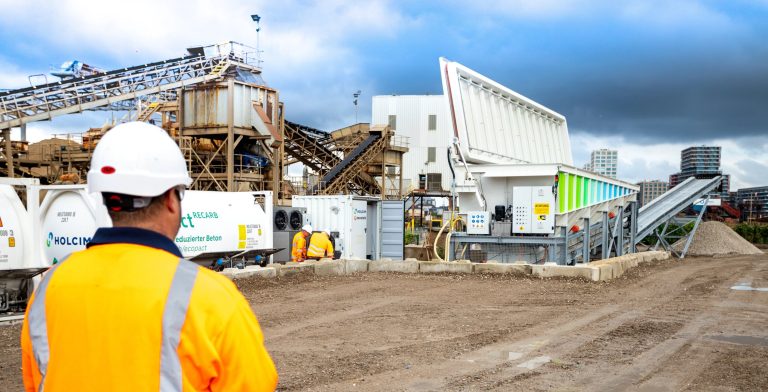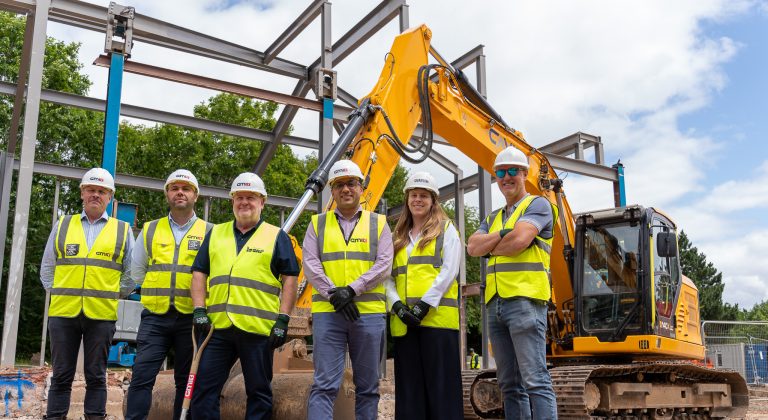Work began in March to demolish St Helen’s Tower, the incumbent building on the site of the planned tallest building in London, One Undershaft. This will be the tallest building to be demolished in the capital to date. Based on details shared in planning documents published by the City of London, Switzerland-based carbon removal specialist neustark calculated a ‘missed’ opportunity to reuse 49,000 tonnes of concrete aggregate removed from the site, and at the same time permanently store at least 490 tonnes of CO₂ in recycled concrete aggregate (RCA), thus permanently removing these residual emissions from the atmosphere and further supporting a circular economy within London’s construction sector – offering a significant opportunity for a permanent carbon sink. The ‘reuse’ and remove (CO₂) opportunity within London’s skyline The clear opportunity to reuse some, if not all, of the 49,000 tonnes of concrete aggregate from the demolition of St Helen’s Tower would allow it to be returned to the same site at One Undershaft, London’s newest ‘tallest building’. According to details published, One Undershaft will require 170,000 tonnes of concrete. Assuming building contractors utilise the full 20% substitution of gravel with RCA allowed by UK standards (BS8500-2) – roughly 14,000 tonnes of carbonated recycled concrete aggregate (cRCA) could be reused at the same site – which would incorporate 140 tonnes of CO₂ to be permanently stored. Under the current UK legislation, limit of 20% aggregate, this would leave a surplus of approximately 35,000 tonnes of RCA (left over from the demolition of St Helen’s Tower) and a further opportunity to sink a further 350 tonnes of CO₂ on other local building projects. Answering the call of London’s circular economy are projects such as 100 Leadenhall Street and 50 Fenchurch Street. Both projects are in pre-construction phase and have been recognised for their respective ‘green’ credentials. These projects have architects, owners, and operators who are likely to welcome the opportunity to reduce embodied carbon, a key metric used by green certification bodies such as RIBA and BREEAM. The sharp reality of the capital’s continuous evolution coupled with City of London’s goal for a greener, more environmentally sustainable Square Mile, means there will never be a shortage of building projects willing to support all avenues of green construction. However, it is legislation holding back construction businesses from reaching the potential for carbon removal and building green supply chains. UK construction needs supportive ‘green construction’ regulation in line with EU UK standards (BS8500-2), which limit recycled concrete aggregate (RCA) use to 20% in reinforced concrete, significantly constrain greener building solutions. In contrast, countries within the EU and Switzerland are allowed to use 80%+ (depending on use cases) in commercial buildings. A compelling example is the Bellis project near Zürich, a mixed-use residential and commercial development featuring 44 apartments, office and commercial space, and business apartments. Except for prefabricated elements, all concrete structures – including walls, floors, floor slabs, and ceilings – were built using cRCA. In total, 7,500 m³ of concrete incorporating cRCA was used, allowing for approximately 75 tonnes of CO₂ to be stored within the structure. Raising the limits of RCA use in line with the rest of Europe will allow London’s high-profile regeneration projects such as One Undershaft to reuse all of the demolished concrete from the incumbent building, St Helens Tower. Other landmark developments, such as Canary Wharf Group’s Wood Wharf, are already demonstrating this approach in action, where concrete from a decommissioned, 100-year-old quay nearby has been broken down and repurposed for the foundations of new residential buildings. “The UK is one of the leading countries within Europe for its efforts towards decarbonisation. However, within the construction industry, regulation and green standards are lagging behind countries such as Switzerland and Netherlands”, says Valentin Gutknecht, Founder and Co-CEO at neustark. “Updating guidelines, in line with Europe, for the use of recycled concrete for commercial construction will enable London construction firms to utilise existing waste stream, like demolition concrete, as a tool for climate action. Carbonated recycled concrete aggregate will indeed present an opportunity to turn a problem into a solution by taking one of the most essential materials for commercial construction and turning it into a carbon sink.” Building a circular economy for construction within the capital London has been a city of progress since the industrial age. It is therefore inevitable that London’s skyline will continue to evolve. With the scale of these projects expanding, it has become important that London construction firms embrace practices of the circular economy. To meet climate targets, London must invest in more local, greener supply chains and reuse demolition waste within flagship projects such as One Undershaft, Leadenhall Street and Fenchurch Street – building a more circular economy within the construction sector. “Investing in local supply chains and carbonated recycled concrete aggregate is one of the most efficient ways for London to reduce emissions from commercial construction projects. The environmental benefits are clear, and the cost-effective nature of this solution should be a significant factor in its adoption,” says Valentin. Neustark’s partnership with a leading UK supplier of sustainable building solutions established a London site supplying cRCA to firms like Canary Wharf Group for development projects around the city. cRCA is a groundbreaking material that offers a cost-effective and largely untapped solution for significantly removing the UK’s carbon emissions, as well as strengthening the circular economy by using demolished concrete – one of the largest waste streams at 1 billion tonnes per year – as a carbon sink. Building, Design & Construction Magazine | The Choice of Industry Professionals














